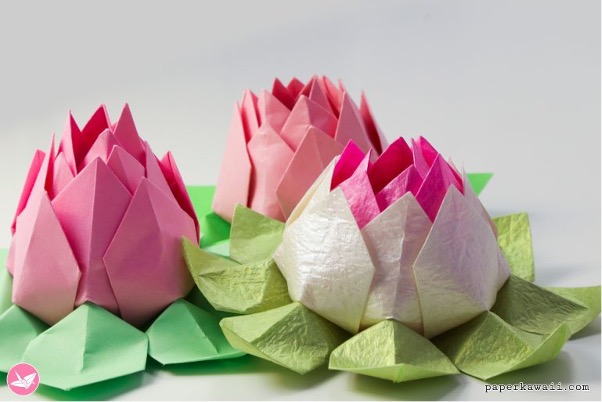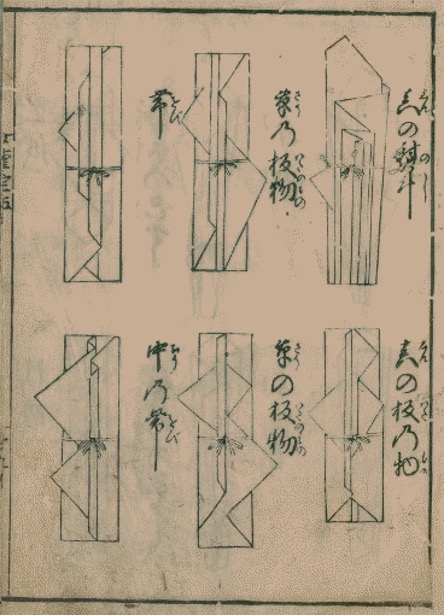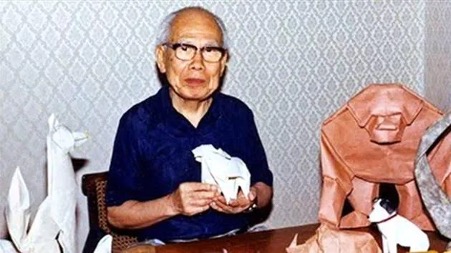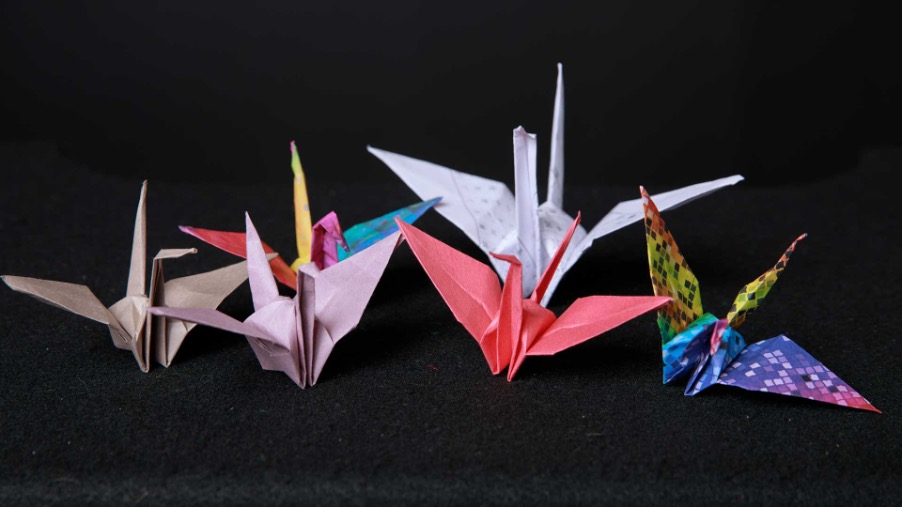The word origami refers to the traditional Japanese practice of folding paper to create objects. This artform involves intricately folding paper to create geometric designs, shapes, and objects like animals and plants, that may either be two dimensional or three dimensional. Origami is not just a mere medium of artistic expression; it also holds immense cultural significance. This artform focuses on the expression of creativity through precision and intricate techniques.
While origami is popularly believed to be originating from Japan, some historians argue that the origin of this form of art may be traced back to several ancient cultures in other parts of the world. However, it is worth noting that the form of Origami most commonly recognized and practiced by the masses today is significantly inspired by Japanese traditions. The term Origami itself is derived from the Japanese words “oru” meaning to fold and “kami” meaning paper and is now popularly used as an umbrella term to describe any type of paper folding artform.

Tracing the roots and evolution of Origami
Though popularly believed to have originated in Japan around a millennium ago, some argue that origami might actually find that its origins lie in China. A possible explanation for this rationale could be that the invention of paper sheets is something that has been credited to Chinese court officials. Similarly pleating fabric and folding napkins were socially esteemed practices in Europe, which led some to believe that the artform we presently know as origami may have some roots in this continent as well. Over time however, artists and the common folk found that paper was the best material for folding, thus it makes sense to believe that paper folding came about after the method for creating paper was discovered, which is why origami is attributed as having predominantly Asian roots.
In china, paper yuanbao, were a common sight at traditional Chinese funerals by the year 900 AD. Designed with the goal of being burned at the conclusion of the ceremony, these trinkets often likened to gold nuggets, were made by painstakingly folding gold or yellow paper. The fact that really sets contemporary Chinese paper folding art apart from Japanese origami, is that Chinese paper folding tends to depict inanimate items, such as boxes and boats.
In Japan, paper folding as a form of artistic expression can be traced back to the practice of Orikata, which can be understood to mean folded shapes. Orikata was considered an essential skill that high-ranking army officials and aristocrats were expected to be masters of. The practice of Orikata is a way to wrap gifts using folded papers and forms a major part of Japanese etiquette and social conventions surrounding formal gift giving. The standard rule was that a single sheet of paper was to be used for anything less than auspicious while two sheets of paper were used for wrapping gifts on auspicious occasions. Several Orikata techniques were developed depending on the type of gift they were used to wrap, i.e. grain, fans, poetry, money etc. Orikata also involved the use of different papers for varying levels of formality. Further, developments in the paper and printing industries brought about changes in the practice of Orikata as well. For instance, paper to be used for Orikata initially had hand drawn designs on them that were replaced by popular mass printed designs that came about as a result of the introduction of wooden block printing techniques.
It was around the late 1800s that the term origami came to be more popularly known. However, references to origami butterflies in a poem from 1680 show that this traditional practice of paper folding did in fact originate several centuries ago.

Origami was initially only used in ceremonial, religious or formal events by the wealthy privileged classes because they were the only ones who could afford the high cost of paper. It was only during the Edo period (1603–1868) that origami became popular with the Japanese masses. The decreased cost of washi paper contributed greatly to increasing the popularity of origami in Japanese society. this development led to the rise of cultural practices involving formal gift wrappers called “noshi” and envelopes or paper purses called “tato” among a far wider segment of society. Eventually foreign influences in the form of Western napkin folding designs began to be incorporated in the practice of origami in the 1850s.
Origami became increasingly popular in North America post World War II. This artform was thoroughly studied, particularly in the United States by folklorist Gershon Legman.
Lillian Oppenheimer, a New Yorker born in 1898, is often credited with the popularization of origami and its introduction to Americans throughout the 1950s. She has been called an origami pioneer and it was her fascination with the Flapping Bird- an origami bird, similar to the origami crane, that can flap its wings on command- led her to delve deep into the world of paper folding arts. Further, she was dissatisfied with the terminology of ‘paper folding’ as she felt that it was ambiguous and didn’t capture the essence of origami, an essence that she felt was a far cry from that of other paper crafts. She used the Japanese term Origami for all her paperfolding endeavors and subsequently popularized the term in the western word. She went on to eventually create the Origami Center of America in New York in 1958. Lillian Oppenheimer wanted the world to share in her love for origami. While she did this by popularizing origami through the relatively new medium of television and authoring several books on the craft, her colleagues focused on recording and cataloguing her efforts so that the rare origami books she had collected over the years could be more accessible to all those who desired to read them.
Transformation of a traditional art and the start of an era of Modern origami
Origami has evolved over the years, in both the materials used and the styles and techniques being practiced. Origami as we now know it originated with Akira Yoshizawa. He has been called the father of modern origami and it was his work that truly transformed the way in which origami was perceived. Before his time, origami was perceived more as a children’s hobby than as a serious artform. His work sparked popular interest in origami both in Japan and abroad. Mr. Yoshizawa created innumerable patterns that broke the traditional rules of origami. He also created a standard system of origami instructions that involved notations made of dotted lines that indicated where to fold. Further, instead of using the conventional cutting methods of traditional origami that resulted in figures that were rather two dimensional and flat, he invented a technique called ‘wet folding’. This method enabled him to produced softer, more realistic lines, and sculpt increasingly intricate designs and figures. Mr. Yoshizawa became well-known after a Japanese magazine hired him at the end of 1951 to fold the 12 signs of the Japanese zodiac as an origami illustration for the publication’s January 1952 issue. This piece of art helped established Mr. Yoshizawa as a revered artist, and catapulted him to new heights, which then subsequently led to exhibitions in Japan and, in 1955, an exhibition at the Stedelijk Museum in Amsterdam. He was also bestowed with the Order of the Rising Sun in Japan in 1983.

Transforming tradition to innovation: practical applications of origami
Origami has evolved over the years to include a variety of new styles and techniques. For instance, American origami artists like Fred Rohm and Neal Elias created cutting – edge methods in the 1960s and early 1970s that led to the creation of models with increasingly new levels of complexity. Models like these not only changed the face of the game in the realm of art, but they also had far reaching effects in other realms as well. The usage of origami principles to create new techniques and technology helps bring about progress in fields like architecture, engineering, mathematics, space tech, and sustainable solutions by bridging the gap between art and science. For instance, paper folding techniques enabled the invention of a collapsible drinking bottle whose size can be adjusted on the basis of the amount of liquid it holds. An interesting application of origami is in the field of Biomedical engineering. Here, the ability of origami figures to be optimized to transform from a static folded state to a deployed state is enabling scientists to come up with self-folding designs that can be used in a variety of ways, specifically in ‘human tissue engineering’. Similarly, origami techniques are now being used to develop compact heart stents that can be inflated once in the right position.
Origami principles have also been used to design air bags in automobiles, create nanobots for targeted medicine delivery, and even increase the adaptability of retinal implants on different sized retinas by employing folding techniques etc. Origami techniques have also been used to create adaptable homes and increase the efficiency of existing houses by creating adjustable screens etc. perhaps the most interesting facet of origami is its applicability in space tech. origami principles have been used to create folding mirrors and lenses, and even foldable solar panels.
The cultural relevance of origami: an example of precision, mindfulness, and endurance.
While origami has the potential to have far reaching implications in the material world, it also has several implications in the intangible subconscious world. Traditional origami involves building figures of the objects around us, for instance, the birds, animals, plants, and random objects we come across in our daily lives. The mere act of folding sheets of paper to create an object requires that one pays attention to detail and works with immense precision. It also builds a feeling of mindfulness as it is not an easy task to build figurines when distracted. Not only is the practice of origami a leisurely activity that can be used to improve one’s concentration and dexterity, it also helps develop motor skills by improving one’s hand eye coordination.
Origami can also be easily incorporated into spiritual routines. For instance, according to a Japanese custom, if one builds 1000 origami cranes, then they may make one wish that is certain to come true. These wishes are usually used to ask for a long, happy, and healthy life.

Origami is also a major part of the Zen lifestyle. The repetitive aspects of paper folding are rather similar to the Zen practices of chanting mantras, inducing concentration through meditation and mindful breathing. Origami creations are also a great way to illustrate certain quintessential aspects of Japanese culture like that of wabi-sabi, an aesthetic that embraces the fleeting and beautiful.
While the practice of paper folding has almost always been perceived as a leisurely childhood pastime, there is no denying that this form of artistry is so much more than just a simple craft. Origami as an artform can be best described as an amalgamation of meditation, endurance, and mindfulness. In practicality, we find that it has the potential to manifest itself in nearly every sphere of our lives acting like a bridge between the various disciplines of study.
Perhaps what is so alluring about origami, is merely a virtue of its intrinsic nature, that enables it to act as a bridge between the tangible and the intangible world, connecting our physical faculties with our mental, emotional and spiritual ones.
Written by – Nandini Pillai
Edited by – Khalid Khursheed
